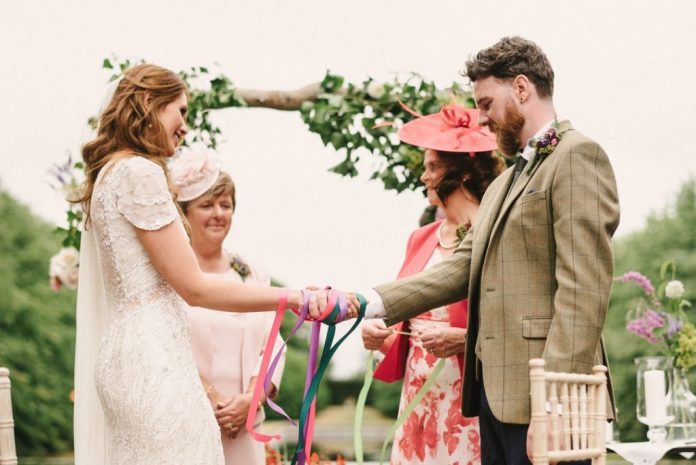
Welcome to the world of handfasting, where two individuals become one. You have taken a step into a tradition that is rich with history and meaning. We’ve been planning this ceremony for months, and we hope that it will be an appropriate reflection of your relationship. We want to help you celebrate the union of your hearts and souls, and we hope that the ceremony will allow you to take a moment to reflect on how far you’ve come in your relationship together.
You may not realize it, but handfasting ceremonies have been around for centuries. They originated in Ireland and Scotland as an ancient form of marriage—one that was more about commitment than legalities. These days, handfasting ceremonies are becoming more popular because they offer couples an opportunity for something unique: a wedding ceremony that reflects their own personalities, beliefs, and values.
What is Handfasting
Handfasting is a pagan marriage ceremony that dates back to the ancient Celts. It’s also known as “tying the knot,” because it involves binding two people’s hands together with a ribbon or cord. The cord may be a long piece of fabric or three pieces braided together with flowers, keepsakes, or charms woven throughout or tied to the ends.
The material used should be long enough to wrap around your hands several times. This symbolizes the couple’s commitment to each other, and they wear the ribbon throughout their wedding day as a reminder of their love.
Handfasting ceremonies can be performed in any number of ways—from traditional to modern—and can include many different rituals, including exchanging vows and rings. The practice was first used by pagans as a way of becoming spiritually bonded, but it eventually became more widely accepted and used in weddings for Christians.
History of Handfasting
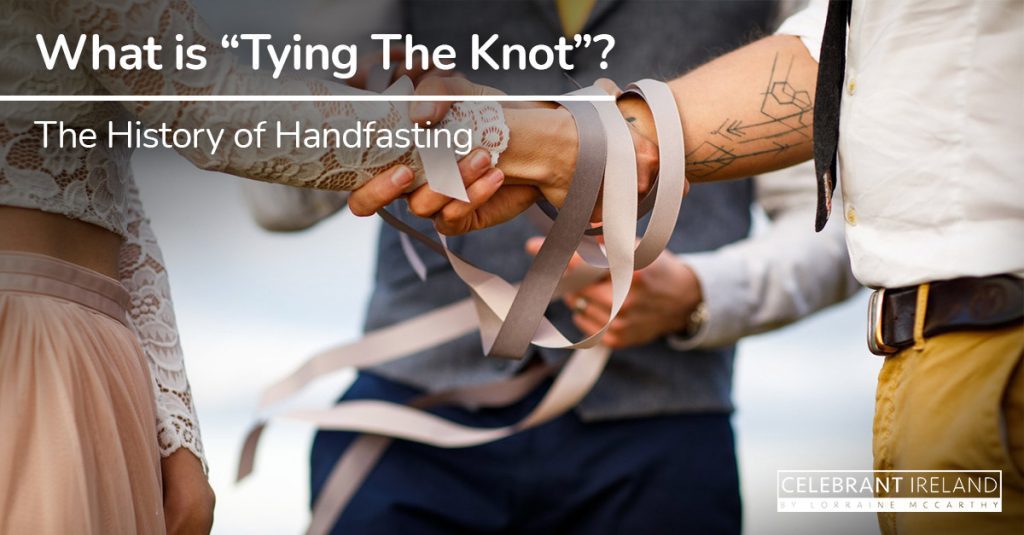
Handfasting is a Celtic ritual dating back to 7000 BC. However, in ancient Ireland, handfasting was used to mark an engagement, not a marriage. When a couple wanted to get engaged, they would visit a priest who would conduct a handfasting ceremony with them. This would be the couple’s public declaration of their intent to marry and their hands would stay tied until midnight.
After a year of engagement, the couple would revisit the priest and either move forward with their wedding or choose to part ways and find new romantic partners. Handfasting is also seen in Wiccan and Pagan marriage celebrations. But nowadays, couples from all cultures are choosing to include handfasting in their marriage ceremony.
What does a Handfasting symbolize
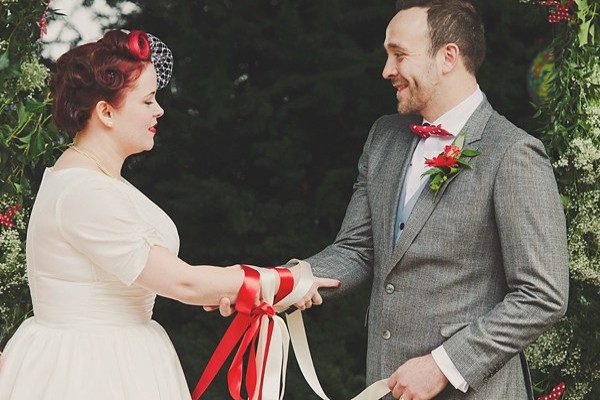
Handfasting is a ceremony that symbolizes the commitment of two people to each other. It represents, as well as celebrates, their love for each other and their intention to build a life together.
A Handfasting ceremony is an opportunity for you to affirm your love for each other, as well as express your intentions for your marriage. The ceremony is performed by a priest or minister who will guide you through the steps of the ceremony. The couple then ties their hands together with a ribbon or cord, which symbolizes the binding of their hearts and souls.
Who can conduct a Handfasting
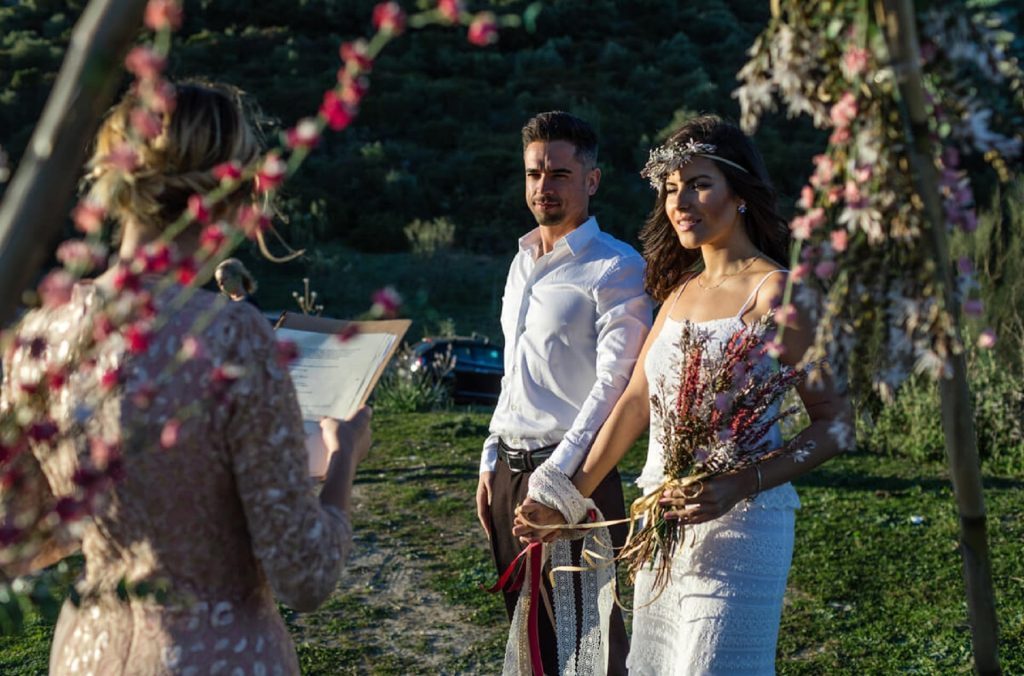
The spiritual beliefs and cultural and social background of each couple will generally determine the style of Handfasting conducted and the component parts that are included. Finding a celebrant who can perform a Handfasting in the style a couple seek is paramount. I suggest you speak with the celebrant in person, ask lots of questions and then make your choice.
Handfasting is a beautiful loving gesture and offers a very visual addition to the ceremony with a physical reminder in the form of bindings. It is a very symbolic way to remember it and ‘ties the knot’, binding you in love to one another, in front of all of your loved ones.
How long should Handfasting bound

In ancient times, couples usually remained bound until midnight. But you’ll likely want to greet your guests, eat and dance without being tethered together, so feel free to take the ties off after the ceremony. It’s best to try and slide the ties off without breaking the knots. If you want to take them home as a keepsake, make sure you put them in a safe place or ask a member of your marriage party to look after them for you.
What should be said during the ceremony
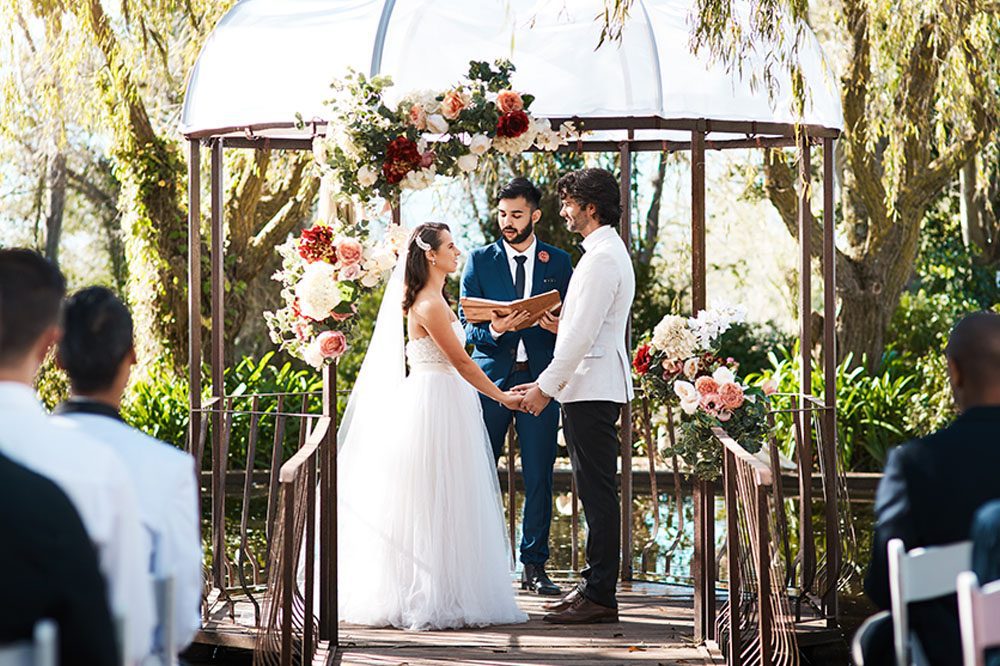
It’s a good idea to introduce the hand-fasting ritual to your guests, explain the meaning behind it, and why you’ve chosen it for your wedding. This can be done either by your celebrant or in your ceremony notes. Depending on your celebrant, they may have a tried and tested hand-fasting ritual structure that they’ll be able to share. If you’re creating your own ceremony, have a play around and see what works for you.
You can say a few lines to each other before the ritual begins, or if you have several cords, exchange a different vow for each one. You could also leave your vows altogether until later in the ceremony. There are lots of hand-fasting vows online, but to be honest, most of them are quite cheesy! You’ll probably be better off writing something yourself that will feel more authentic and natural when you recite it on the day.
What color ribbon should use for the Handfasting ceremony
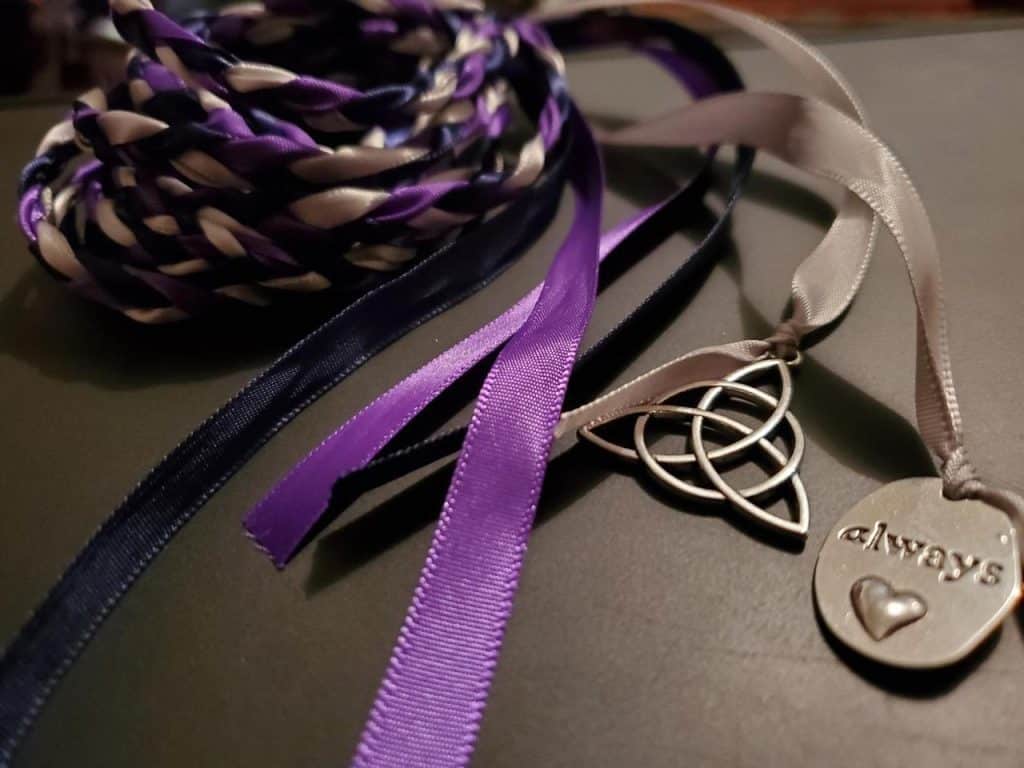
The color of the ribbon you use for your handfasting ceremony is up to you. The tradition, however, is that it should be a color that represents love, joy, and celebration. It’s important to keep in mind that this is a ceremony where you are committing to one another as partners for life. We’ve added a list below of each color and its representation when used within the ribbon at a handfasting ceremony:
- Red – Strength, Passion & Fertility
- Yellow – Confidence & Joy
- Orange – Attraction & Kindness
- Green – Prosperity & Health
- Purple – Power
- White – Purity & Peace
- Black – Strength & Success
- Blue – Tranquility, Sincerity & Devotion
- Pink – Romance
- Brown – A grounded nature
- Gold – Energy, Wealth, Intelligence, and Longevity
- Silver – Creativity & Inspiration
After you’ve looked at this list, you might be wondering which color to use. Some brides will use one specific color to fit the theme of their wedding or focus on what the color represents, while other brides will mix and match colors to create the perfect combo that represents all aspects of both themselves and their partner.
Why should we include Handfasting in a wedding ceremony
Handfasting is a beautiful and meaningful way to honor the love between you and your partner. It’s also a great way to create a wedding ceremony that is meaningful for you because it allows you to choose the elements of the ceremony that are most important to you.
It provides an opportunity for couples to create their own unique ceremony, which is one of the best things about having a handfasting wedding ceremony.
Handfasting is often associated with pagan traditions, but it’s also used in many different kinds of ceremonies by people who follow different religions or spiritual paths. Handfasting can be performed as part of a more traditional wedding ceremony or as its own separate event—it just depends on what works best for your relationship.
Why Handfasting ceremony so popular in modern weddings
Handfasting ceremonies are becoming increasingly popular in modern weddings because they offer a more personal and intimate experience than other types of functions. They also provide a sense of history, which makes them an excellent option for couples who are looking to tie the knot in a more traditional way without actually having to go through with an actual wedding.
One thing that sets handfasting ceremonies apart from other types of functions is that they require two people to be present in order to be performed. This can make it difficult if you only want one person involved in your ceremony, but it also means that everyone involved is going to be much more invested in the process and its outcome.
In addition, handfasting functions often involve tying a ribbon around each other’s wrists or hands, which can symbolize unity or connection between two people who have chosen each other as partners for life. The tradition originated in Scotland (where the word “hand” comes from), but has spread throughout Europe as well as America over time.
How can you make a handfasting ceremony meaningful
Handfasting is a beautiful and meaningful way to celebrate your wedding day. It’s a ritual that has been used for hundreds of years to celebrate the beginning of a couple’s marriage, and it’s still practiced today.
Here are some tips for making your handfasting ceremony as meaningful as possible:
- Involve family members or close friends – Instead of having your wedding officiant tie the cords around your hands, you could ask a family member or close friend to do it. You could even have a few special guests involved, each tying a separate cord around your hands. Just make sure everyone knows not to tie them too tight.
- Talk about it with your officiant beforehand – Your officiant should be able to help guide this conversation. They’ll be able to tell you what kind of ceremony they usually conduct, as well as any rules or customs surrounding handfasting ceremonies in their tradition (if any).
- Use special cords – Bring more meaning to your handfasting ceremony by using a special cord, such as one used by other family members at their weddings. You could also use a cord made out of special fabric, such as a grandma’s wedding dress, or purchase a cord in specific colors, such as the colors of your home country’s flag.
- Exchange vows – Handfasting becomes so much more meaningful when you take the time to exchange vows while your hands are joined. You could even come up with a vow or promise for each cord that is tied around your hands. Check out our vow resources above.
- Display the cords as a keepsake – Assuming you were able to successfully remove your hands from the cords without undoing any of the knots, you could then display the tied cords in your home. It could be your everyday reminder of the love that ties you two together.
Conclusion
The handfasting ceremony is a beautiful tradition that has survived the ages. It’s a way for you to celebrate your love and commitment to one another, something that will last through the years and beyond.
We hope you’ve enjoyed learning more about this special kind of wedding ceremony. We wish you all the best on your journey together and hope that this article helps make planning your handfasting ceremony a fun and enjoyable experience.











